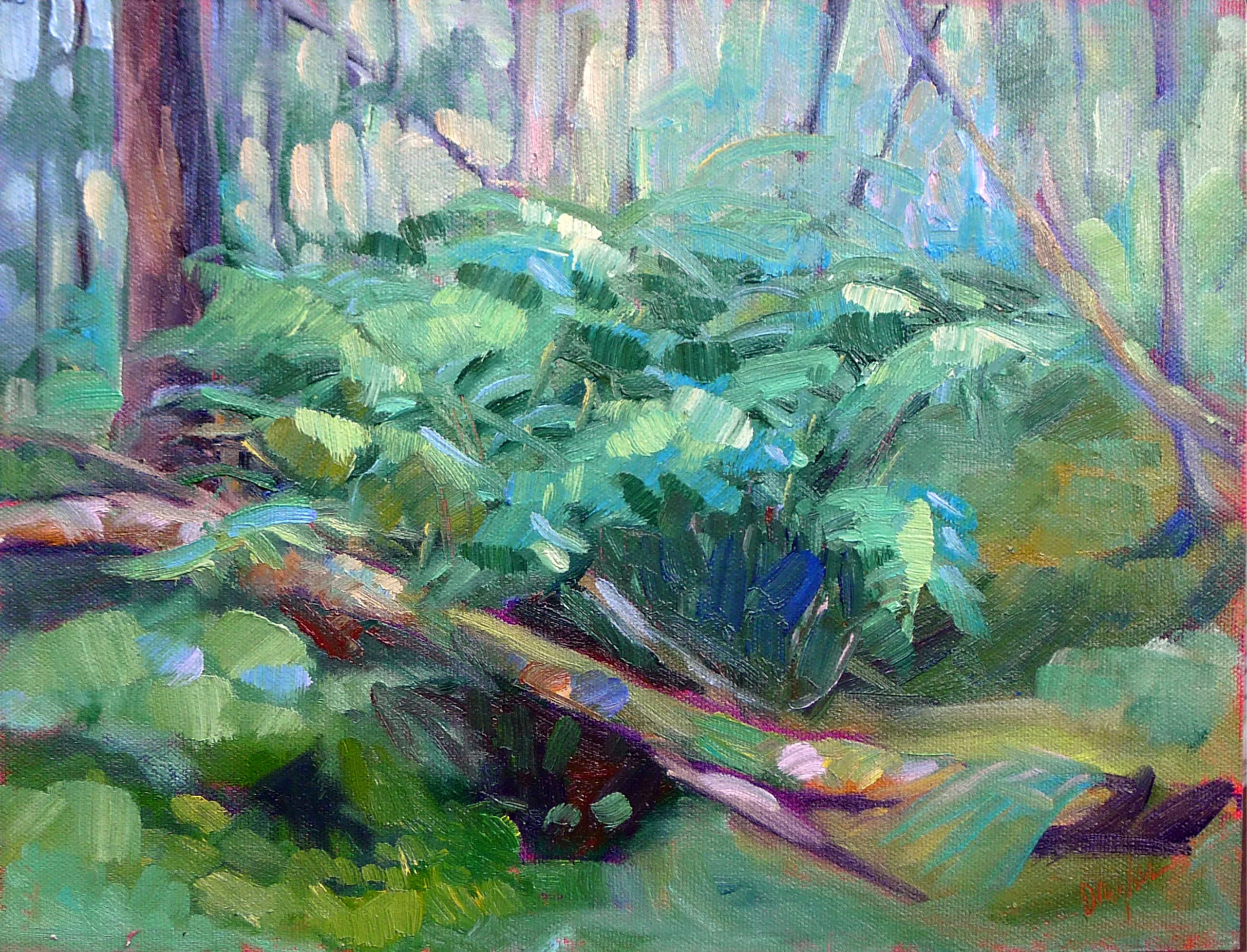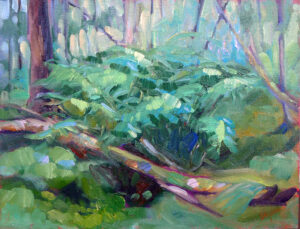
I’m in Paul Smiths, NY, teaching for Saranac Lake ArtWorks. Yesterday, student Mark Gale asked, “What should I do about this passage,” gesturing to a dark line of spruces. He was, at the time, bookended by Beth Carr and me. She’s been my student for several years, and is a crackerjack painter with impeccable judgment.
“Nothing,” we said in unison. “It's the quiet that allows the rest of the painting to sing,” Beth added.
I spend a lot of time talking to students about patterns of darks and lights, motive lines that drive energy through the painting, and focal points. These are such difficult concepts that I never seem to move on to quiet passages, but every painting has them and needs them. They exist in counterpoint to areas of motion, and they’re equally important.
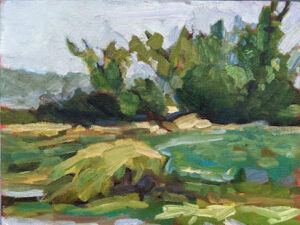
A quiet passage isn’t an empty passage. It may include figures, trees, brooks and other objects. However, it’s not detailed and doesn’t have high contrast. It’s more of an invitation to imagine than a statement in full.
It needn’t be dark, either. Consider Claude Monet’s haystack paintings. There are passages of luminous color that, nonetheless, recede. They’re not high-contrast or line-driven, but they shimmer with chroma and careful mark-making. “What keeps my heart awake is colorful silence,” he said.
The quiet passage allows the mind to rest. It acts as a foil for the main object.
Quiet passages can be destroyed by excess noodling. Here plein air painters have an advantage—they’re typically worn out long before they can cover every inch of canvas with information. But not always, and the impulse to fill these empty spaces later in the studio can sometimes be overwhelming. It’s one reason I’m not a fan of excessive touch-up of plein air paintings—it can ruin a previously-wonderful design.
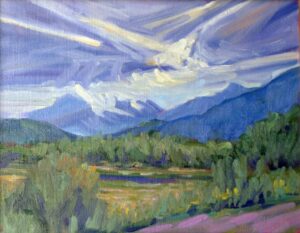
Yesterday I had my students paint in the boreal bog at Paul Smiths VIC. It’s a landscape of stunted larches and spruces, pitcher plants and sundews, with a lazy river chugging through it. It’s heavy on color and light on structure, making it a challenging subject to paint. My monitor had painted trees and figures along the boardwalk, and asked me what she should do with the rest of the space. There was no way she could fill it in with every tiny tree.
“Essentially, nothing,” I said. It was already shimmering green. Had we had more time, I’d have suggested a bit more in the way of soft brushwork, but the facts were already there, and the quiet of her greens set off the figure on the boardwalk.
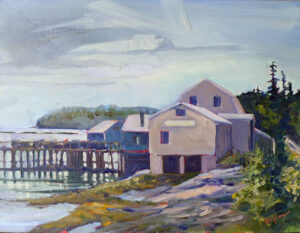
Silent passages are where the mind fills in what isn’t there. The human mind seems to rebel against having everything spelled out for it; it loves mystery. Even so-called photorealism uses silent passages; we aren’t even aware of the artist’s judicious editing.
I often use Johannes Vermeer’s The Girl with the Red Hat as an example of the lost-and-found edge, but it’s also a fabulous example of the power of silence. Much is not stated: the drapery in shadow, the carving on the chair, even the modeling in most of the face. These stand as powerful foils for what is stated: her sensuous lips, the feathering of her hat, and her lace collar.
My 2022 workshop schedule can be found here. That includes the beautiful red rocks of Sedona, urban painting in Austin, TX, June and September workshops aboard schooner American Eagle, mountain vistas in the Berkshires, and our ever-popular Sea & Sky at Schoodic in Acadia National Park.

